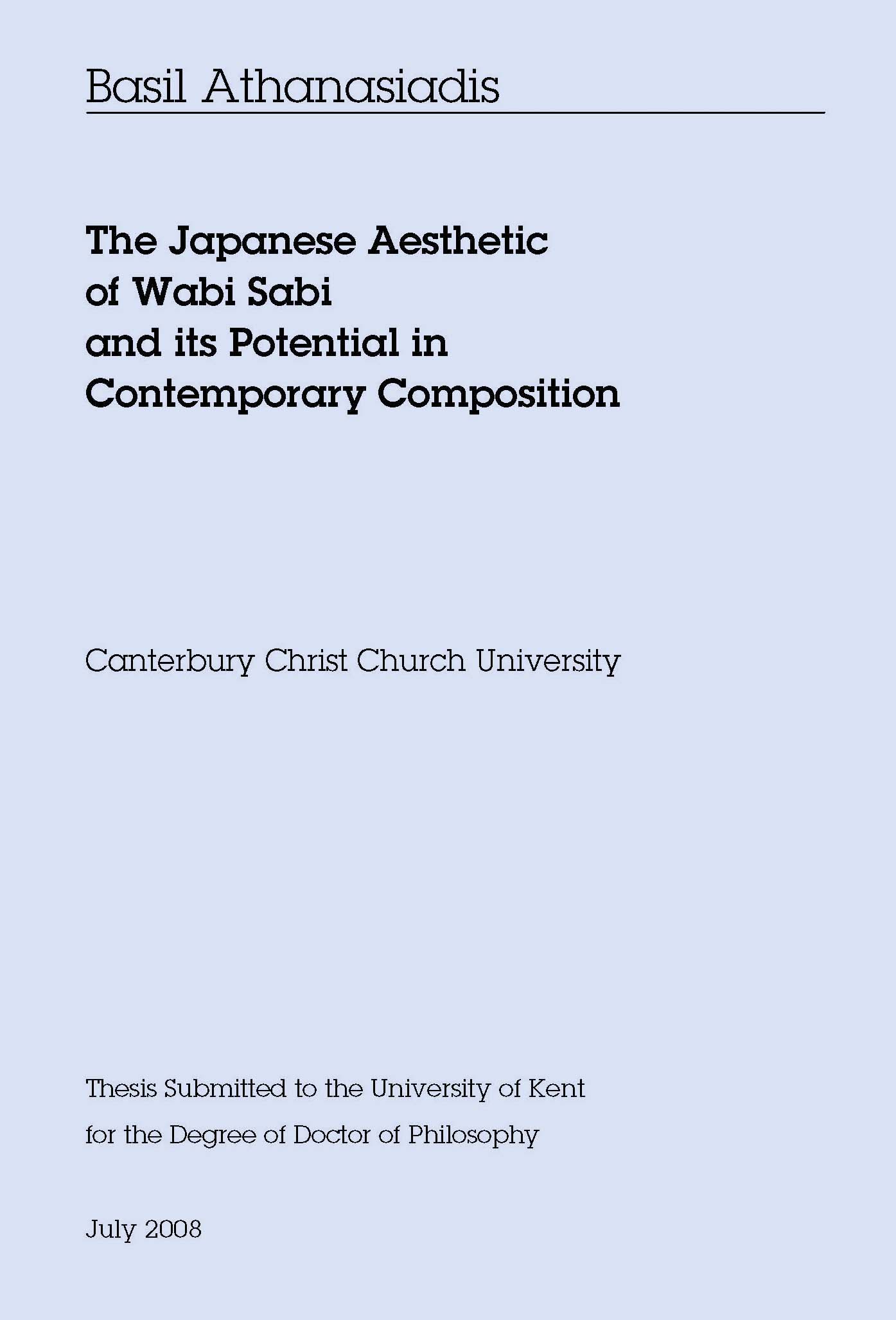The introduction provides information about wabi sabi’s origins, main characteristics and a definition compiled from a variety of sources.
The first chapter offers additional information about the diverse aesthetic connotations of wabi sabi exploring examples of its application in traditional Japanese arts, the Zen garden of Ryoanji, traditional Japanese music, and finally in contemporary music.
The second chapter presents six original compositions each supported by a commentary. Their
scoring features a variety of instrumental forces including Japanese and Chinese instruments (sho, shakuhachi, koto, shamisen, erhu and biwa). The different emphasis given by each of the compositions in analysis, helps provide a broad picture of the potential of wabi sabi in contemporary composition.
The third and final chapter presents three additional compositions that demonstrate in a freer manner a glimpse of the potential of wabi sabi for future applications.
